The History Of Daihatsu MIRA

The Daihatsu Mira (also known as the Cuore, Domino or Charade outside of Japan), is a kei car-type vehicle built by the Japanese car maker Daihatsu. It comes with a variety of options and chassis variations, with the latest variant having four models: "Mira", "Mira AVY", "Mira Gino" and "Mira VAN". The Mira is basically an upgraded and renamed version of the Daihatsu Fellow. It was sold alongside the names of Mira and Cuore. The commercial version was dropped when the Mira was released in later years as a Charade. Out of Japan, the Mira also offer with 850 cc engine. In Australia, the two-seater version was known as a "handivan" and was later renamed as just Handi.
In July 1980, the Daihatsu Mira arrived to replace the Daihatsu Max Cuore. The second generation (L70) of the Mira was introduced in 1985, and the third generation (L200) in 1990. The third generation of Mira also sharing the identical look with the 1986-1992 Daihatsu Leeza. The fourth generation (L500) was introduced in 1994 and was still based on the same chassis as the L200. October 1998 saw the fifth generation (L700) introduced, 2002 the sixth generation (even though the Mira Gino (L700) was still in production until 2004), and in 2006 the seventh generation model.
The L200 variant (1990–92) had two engine sizes: a .65L 3-cylinder 660 cc engine was available in Japan, while in Australia and other part of the world, a more powerful variant with 847 cc and a 4-speed manual gearbox was in use from 1990–91. A 5-speed manual transmission came into force in 1992. The L500 Mira is the first kei car from Daihatsu which offer 4-cylinder 660 cc engine.
The 660 cc Japanese variant of the Mira had a rather unusual feature for a modern car: the rear passenger seats were designed and manufactured without rear seat-belts being fitted.
The Daihatsu Mira is one of the lightest four-seat passenger cars in the world weighing just 580kg (1279lb).
The L70 (second generation) and L200 (third generation) Mira also available in Drop off or Pick-up style. The pick-up version were drop from production after the L200, the Drop off style still available in L500(fourth generation) before it was discontinue.
The Mira Gino, with its distinct retro-style looks, is marketed as the Daihatsu Trevis in Europe. The first generation of the Daihatsu Mira Gino is based on the L700 Mira. In 2004, the second generation Mira Gino was ultimately replaced, and no longer shares the same identical body as the Mira.
- There is also a version of the third generation of the Mira (known as the Daihatsu Ceria) in Indonesia between 2000-2006.
From Wikipedia, the free encyclopedia
More About Daihatsu MIRA
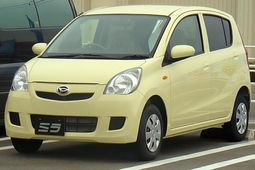
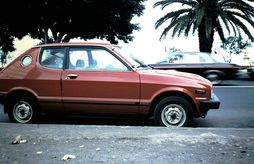
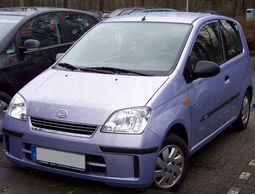
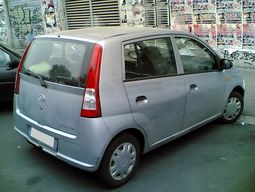
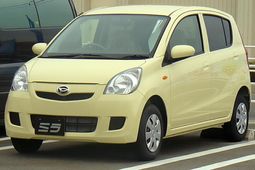
|